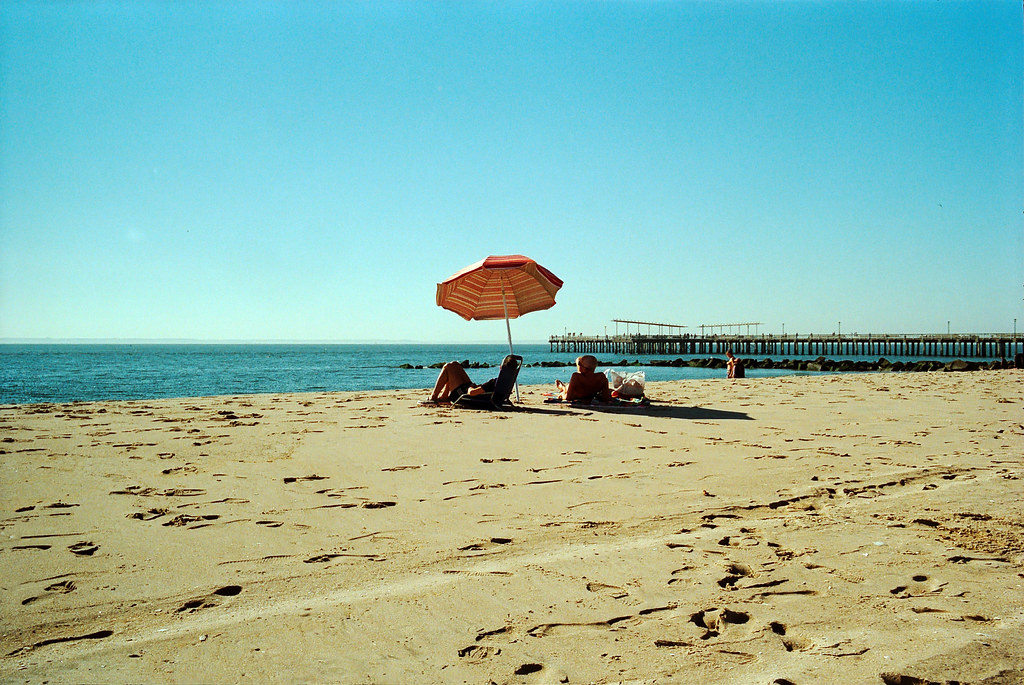#leica image
Explore tagged Tumblr posts
Text
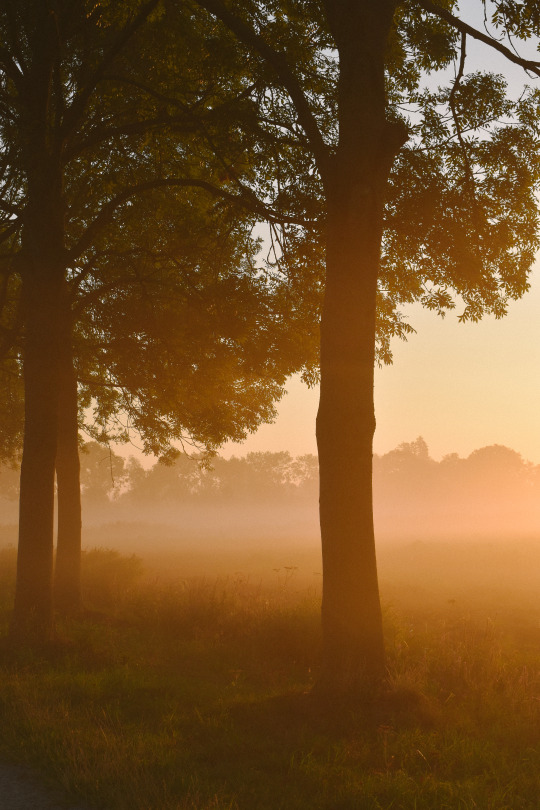
soft morning light
#photography#canon#leica#autumn#season#nature#photographer#nikon#landscape#fujifilm#nature art#misty nature#forest#trees#lake#nature photography#nature living#nature aesthetic#nature images#nikkor#landschaft#landscapes#landscape photo#landscape photography#landscape photoshoot#landscape photoset#mist#misty#morning light
935 notes
·
View notes
Text
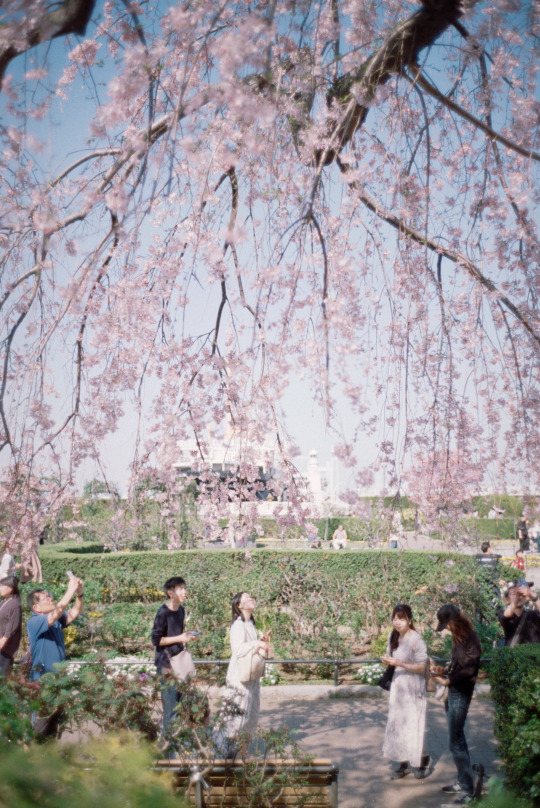
Yamashita park, Yokohama city, Kanagawa pref.
March, 31st, 2024
#leica#photographers on tumblr#original photographers#street photography#flowers#plants#trees#color photography#film camera#film photography#kodak pro image 100#cherry blossom
72 notes
·
View notes
Text

orange tune | Leica M6 | Kodak Pro Image (redscale) | 2021
#daniloz#analog photography#35mm#35mm film#nature#35mm photography#leica#35mm color film#kodak#leica m6#kodak pro image 100#leica redscale#redscale photography#farm#summicron 50mm
13 notes
·
View notes
Text

by the fastidious @crawfishcomic
237 notes
·
View notes
Video
M4_Colour_ProImage100_oct23_roll14_4_edited-1 by Ghassan Matta
#Coney Island#New York City#New York#streetphotography#film#35mm#analog#analogue#shotonfilm#film photography#leica#leica M4#leica m6#kodak#kodak pro image 100#proimage#proimage 100#emulsion#flickr
2 notes
·
View notes
Text

6 notes
·
View notes
Text
Top 10 Best Digital Camera Brands
Digital cameras have become an essential tool for capturing memories, whether it be for personal or professional use. With so many different brands and models on the market, it can be challenging to decide which one to choose. In this post, we will be discussing the top 10 best digital camera brands based on their quality, features, and reputation. Table of…

View On WordPress
#autofocus#beginner#best camera brands#Canon#digital camera#durability#features#Fujifilm#GoPro#Hasselblad#image quality#Leica#lens options#Nikon#Olympus#Panasonic#Pentax#professional#reputation#Sony#video capabilities
1 note
·
View note
Text
youtube
#Panasonic LUMIX FZ1000 II#20.1MP#Digital Camera#1-inch sensor#4K video#Leica DC Vario-Elmarit lens#5-axis image stabilization#Low light photography#WiFi#Bluetooth#High-quality images#High-quality videos#Full HD#Slow-motion video.#Youtube
0 notes
Text
Exploring Used Camera Shops in Paris
by Johnny Martyr My wife and kids were kind enough to indulge my photographic interests obsessions by exploring some cool camera shops during our recent stay in Paris, France. Here in Maryland, United States, camera shops are an endangered species. And the few that remain are very different than what we discovered in Paris. In the early 2000’s, there were quite a few camera stores in and…

View On WordPress
#Atelier Images Services#black and white#camera repair#camera stores#Euro Photo#Euro Photo Beaumarchais#Film Photography#France#Leica#Leica Store Paris#Leica Store Paris Saint-Honore#Odéon Occasions Photo#Odéon photo#paris#Photo Vincent
0 notes
Text

Yumna Al-Arashi, Axis of Evil (Yemen, Afghanistan, Iran, Iraq), 2020
in Leica Fotografie International (LFI) magazine:
"This photograph was made for my first European solo show in Berlin, in the gallery Anahita Contemporary. It's a self-portrait alongside Anahita Sadighi, Moshtari Hilal and Susu AbdulMajid. We are respectively from Yemen, Iran, Afghanistan and Iraq. Despite our different roots I noticed that we all share a similar background, having grown up in Western nations that often vilify the places our families are from. I also noticed the strong profiles of each of our faces. So I decided to create this portrait with the title Axis of Evil – a play on the term so frequently used to describe our home countries when we were growing up. It also embraces the beauty of our distinctive noses, which are often treated as ugly, something to be changed. I wanted to embrace these qualities of ours in this image, creating something powerful, defiant."
#couldn't find this one specifically on tumblr so. here it is now#yumna al-arashi#women photographers#women artists#photography#imperialism#MENA#SWANA#middle east#yemen#afghanistan#iran#iraq#wanted that quote on here because you all know how i am about noses and there is little that i can say that others haven't.#features#faces#women
1K notes
·
View notes
Text

Yamashita park, Yokohama city, Kanagawa pref.
March, 31st, 2024
#leica#photographers on tumblr#original photographers#flowers#plants#trees#color photography#film photography#kodak pro image 100#cherry blossom
27 notes
·
View notes
Text

from the rock | Leica M6 | Kodak Pro Image 100 | 2022
#daniloz#analog photography#35mm#35mm film#nature#35mm photography#leica#35mm color film#kodak#leica m6#kodak pro image 100#summitar 50mm#moss#rock
7 notes
·
View notes
Text
Sorry not to be a camera nerd but in IWTV S2 ep2, 3 and 4 Louis in Paris having a Rolleiflex and a Leica specifically for Armand is so significant to me!!! Two cameras used at the same point in time but not by the same people.
First the Rolleiflex.

For the the Rolleiflex to work- you have to take a lil bow before your subject. This is because the viewing mirror is on top of the camera's body, so to see what the lens sees you have to incline. A lot a photographers said utilising this camera is also showing humility in front of the subject specially in street style photography (Robert Doisneau said that the Rolleiflex is like gathering images and the Leica like hunting for them, he also was convinced that the Rolleiflex was an "ethic of life and art" not betraying the subject you are trying to capture). You have to take your time and bow before them. (showing also the fact that louis struggles with not admiring humans )


Now the Leica

The Leica on the other hand put you on the same level as the model. The mirror is in a more traditional position at eye level. And is more favoured for fleeting subject, at least one street photographer as describe the Leica's style of photo as "hunting" for faces capturing the moment ( i think it's Janine Niépce or Henri Cartier-Bresson but don't quote me on this). It's really interesting that he photographs Armand with it , capture the fleeting aspect of his nature ,he is being hunted or they are hunting together ,and they are equals in Louis's eyes.



The style of photo he is taking in ep 4 is called "Humanist photography".
The mouvement in France was criticised for being a postcard image of paris, cliché, naïve and not political enough. And giving a romantic image of Paris after the trag��die of the WW2. It focuses mainly on people, often doing daily mondain activities, Humanist photography really liked cafés and bars. The paradox was despite the cliché exterior a lot of pictures were of working class people (we can see that in the pics he gives to Daniel in ep 2, louis has a very similar choice of subject mater and view of the world, taking portraits of his working class lovers and of Parisians in restaurants). The goal was to heal post war Paris and to show a new beginning. (echoing louis owns personal struggles of finding his new self and a new lover in paris, but also the rose tinted glasses he has on this time has a tourist)
Also in post war paris this is sososos significant in the history of photographie hahhahha my nerd heart is dying....
#outing myself as a IWTV fan#the theme analysis could be pushed further but it's a nice detail i wanted to point out and this post is already too long#also it is very technical vocab heavy for me. i hope it s understandable for non french speakers and non film student#filmposting#interview with the vampire#iwtv#amc iwtv#louis de pointe du lac#photoraphy#IWTV#putting my degree to a noble cause#rent#art history#technobabble
98 notes
·
View notes
Text


Charlie having a little fun with my Safari-colored, Kevlar-wrapped Leica Q2 during our shoot.
Fun day with this incredibly talented and humble young fella
Photographed with Leica SL2-s Kevlar Reporter
#Image 2 shot with #noctilux75 which is always fun to try and focus with my eyesight lol!
Source
82 notes
·
View notes
Note
Recently I took a panorama of the Pittsburgh skyline at night that got a positive response. That was done on the spur of the moment with an iPhone. I want to do that again and more, but this time with a dedicated camera setup. It's been years since I've had one, so I'm basically starting over again. I'm mostly interested in getting day and night cityscapes, and maybe the carryings-on at this year's Anthrocon. Would you have any particular knowledge to pass on as I set off on this journey?
Since you didn't specify a budget I'm going to assume it is in the $10K range.
And you're probably thinking I'm going to suggest a Leica. Every dentist and his brother (who is also a dentist) gets a Leica. But I just can't take a camera brand seriously when they charge you an extra $2200 for the privilege of not being able to shoot in color.
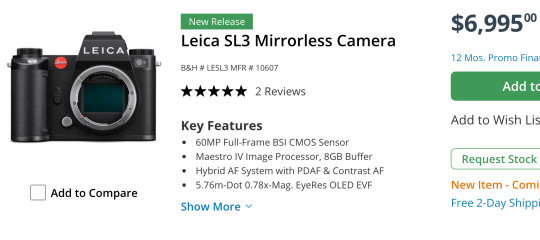
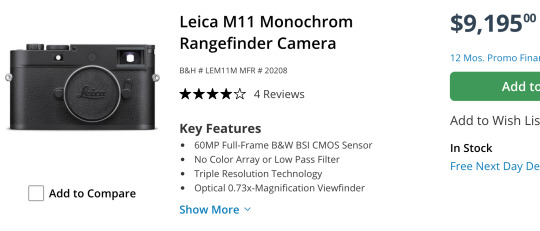
Sure, you can hit a single button in Lightroom to get B&W and save some money, but then you won't be able to brag about how limiting yourself to only shades of gray has opened up new artistic pathways in your brain while a clueless person responds in mumbles during their root canal.
What you really want for your landscapes is a Hassie.
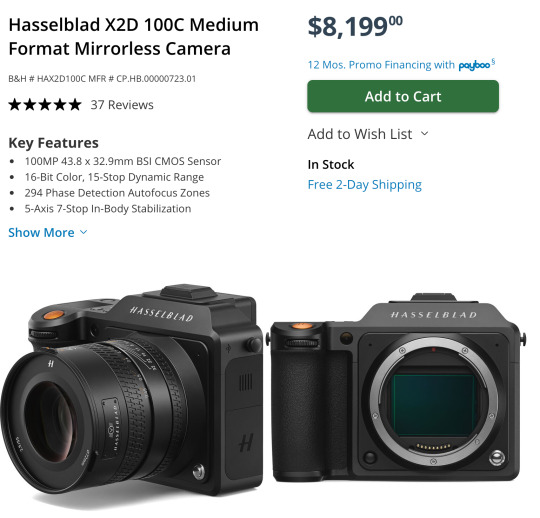
They were the first camera on the moon! How could you *not* want a Hasselblad? That is some camera gorgeousness right there. And it's so reasonably priced*!
*compared to their previous $40,000 camera systems.
And if you are doing landscapes with the Hassie you'll need a nice wide angle lens to go with it. This one is actually quite affordable*!
*compared to their previous $8000 lenses.
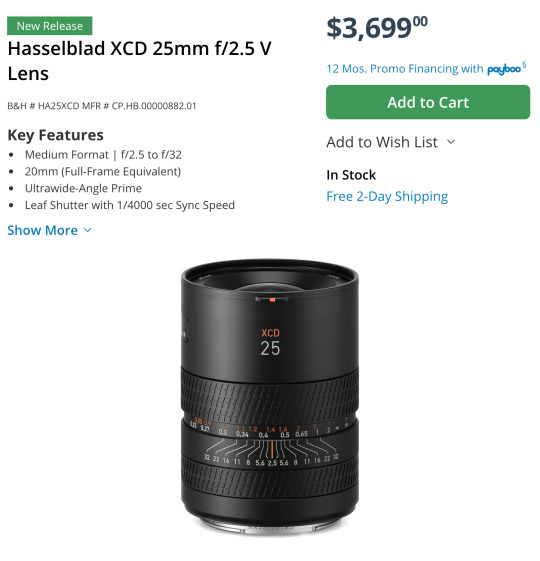
Can we all agree that is a work of art? They even use their H logo as the knurling.
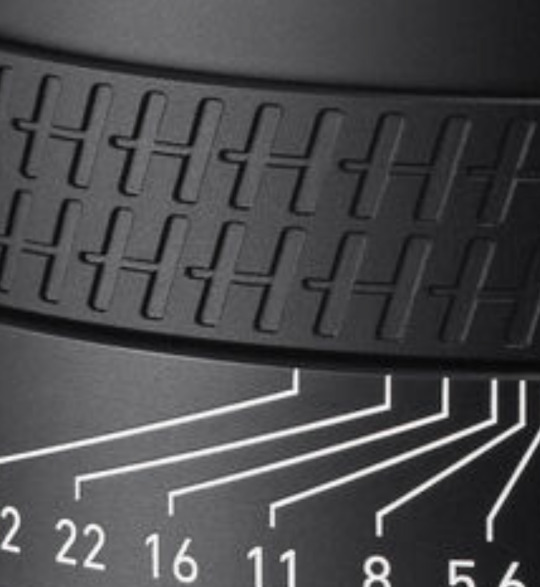
That is just so... extra. And I love it.
Out of the entire alphabet I've heard Hs give you the best grip.
Man, I almost wish I was a dentist just so I could buy a fancy camera.
Sorry... I was just having a little fun.
I never get to recommend the super cool expensive cameras. Because, ya know, the economy and the fact that only dentists have Hasselblad money.
You probably think I'm being silly but there actually is an entire community of dentist photographers keeping the high end camera market alive.
Okay, let's get started...
Landscape Buying Guide
Opening Thoughts
For landscapes I would highly suggest a full frame camera and a high quality wide angle lens.
Full frame has several advantages but it is not necessary. You can go with a smaller sensor like APS-C and get great images. Personally I would not go any smaller, but there have been some great landscapes taken on micro 4/3 and even smartphones. Technique, knowledge, experience, and composition will usually win the day over a camera, but having a nice camera makes things a lot easier.
At this point, with full frame options being very affordable now, the main reason to get a smaller sensor is if you want a smaller system that is easier to carry for extended periods and easier to pack when traveling. Or if you aren't sure you want to take on photography as a hobby, you can get an old APS-C DSLR for under $200 to learn with and test out.
So if you need a very cheap OR very compact system, APS-C and Micro 4/3 might be worth considering, but a bigger sensor will cause less frustration most of the time.
Froggie Note: The expensive Micro 4/3 and APS-C systems are the compact ones. The cheap systems are about as bulky as full frame.
The biggest advantages to full frame are low light shooting, lens selection, and field of view. Full frame cameras have many, many more lenses to choose from. And since the sensor is bigger, it is much easier to get a wider field of view that is often needed for landscapes. And the high ISO noise performance tends to be better on full frame.
However, you can use full frame lenses on APS-C camera bodies within the same ecosystem. They just get a little... zoomier. Roughly 1.5x zoomier. A 35mm acts like a 50mm, for example. So if you want to spend a little less now you can get an APS-C camera with a full frame lens and then upgrade to full frame later on without having to buy a new lens. Full frame lenses work on APS-C bodies but not the other way around.
Most landscapists have a really solid 16-35mm lens and that covers almost all of their needs. So I would suggest something comparable. Please don't get suckered into some crazy 18-300mm superzoom. Just get the focal range you need for the photos you want to achieve.
A purpose-built lens always outperforms one that was made to do everything.
As far as where to get used gear, I highly recommend using KEH or MPB when buying used camera bodies. They check every device and offer between 3 and 6 months warranty to make sure the device won't crap out on you. Lenses are typically a lot more robust and a safer thing to buy on eBay or Facebook Marketplace if you can find a better deal. But the security of having a warranty and a return apparatus if something goes wrong might be worth the extra price when using these two sites.
I am going to recommend Canon, Nikon, and Sony systems. I feel they have the most complete ecosystems with gear that spans all budget ranges. I'm not saying there aren't good cameras from other brands, but you have to remember every camera has an ecosystem surrounding it. There are accessories and upgrade paths and niche lenses that may not be available with other brands. I think Fuji has some tempting options and if you like the look of vintage film photography, their emulation options are quite stunning. Their cameras are also quite attractive and have very satisfying knobs. But I still can't recommend them unless you have a specific reason for wanting their gear.
Just remember that for every Canon DSLR I recommend there is a comparable Nikon option available as well. There are more lenses for a Canon full frame DSLR body than any other brand with Nikon coming in a close second.
So if you choose not to go mirrorless yet, the Canon and Nikon DSLR camera ecosystems are immense and have tons of gear and accessories available to go with them. And since used gear holds up really well, those ecosystems will survive for decades.
Should you buy a mirrorless camera or a DSLR?
Mirrorless cameras are the latest camera technology for interchangeable lens camera systems. At this point they are superior in every aspect and they continue to improve year by year. Because of that, used DSLRs have plummeted in price. This allows people greater access to a starter ILC (interchangeable lens camera) without a significant investment. You can get professional quality images on either format, but mirrorless has a shallower learning curve and much better automatic modes.
The in-body image stabilization (IBIS) stabilizes *every* lens and the eye tracking autofocus make "focus and re-compose" extinct. These are huge selling points for a lot of people. With IBIS you can take photos with up to 2-4 second shutter speeds without a tripod. And never missing focus on a human or animal or bird is pretty cool too.
DSLR camera bodies are no longer being designed by most of the major manufacturers. Thankfully Canon and Nikon developed plenty of bodies and lenses, so you will always have options and upgrade paths. But you will not be able to upgrade to systems with the latest advanced features.
The best DSLRs available are probably the Nikon D850 and the Canon 5D Mark IV. That is as good as it will ever get. The technology ends there. So if you want to enter an active camera ecosystem then you will have to get a mirrorless camera.
DSLR Camera Systems
Full Frame DSLR Camera Bodies
Canon
If you buy a used DSLR, there are some very affordable full frame options. In fact, the classic much-praised budget full frame Canon 6D can be had for under $300 right now.
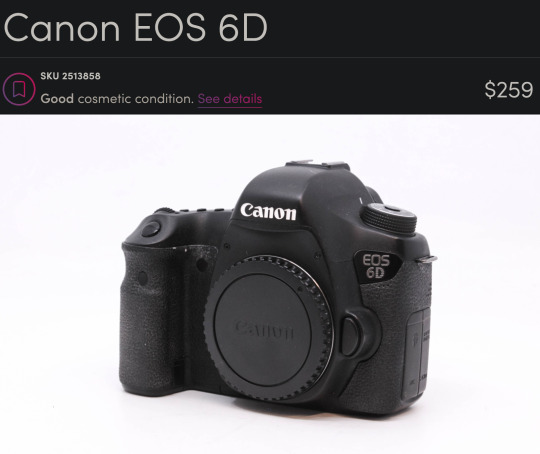
This is an old camera. It has no fancy features. It only has 20 megapixels. It just does what it says on the tin. But it has a big sensor and a *ton* of really cool lenses available for it.
If you are specifically looking to create really high resolution panos, you could also look at the 50 megapixel 5DS R for around $1000.
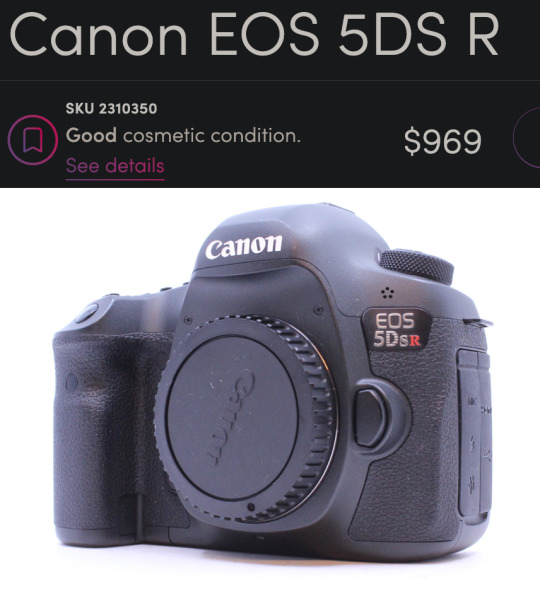
There is a community of landscape pano-maniacs that love to create "gigapans" that have endless amounts of detail where you can zoom in and find new details in every photo. I was only able to create a 120 megapixel photo, but you can still find things like people starting a campfire and a dude fishing and a truck on a far off bridge. So even though this seems expensive for a DSLR, you are looking at another thousand bucks to find anything with more megapixels than this bad boy, so it is quite a good deal relatively speaking.
Nikon
Probably the best DSLRs ever made were the Nikon D800 series and you can get the Nikon D800 for $464.
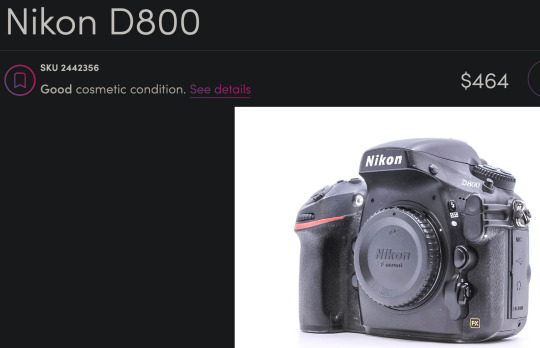
This is a newer camera than the 6D with more megapixels (36) and a better sensor. It also has a more modern autofocus system and about 3 more stops of dynamic range which can come in handy for landscapes. This is an incredible camera for this price.
APS-C DSLR Camera Bodies
If you aren't sure you want to commit to this hobby, you can look into a Canon APS-C sensor body like the Canon Rebels and Canon 60D through 90D models and get good results.
And there are many Nikon DX APS-C bodies that would be great starter cameras as well. If you get a Nikon, you'd have an upgrade path to the D800 if you get hooked by the photography bug. I would miss a few very special Canon lenses like the 100mm f/2.8L macro and the 400mm f/5.6 telephoto but I'm sure I could figure out some reasonable Nikon alternatives that would do roughly the same thing.
Canon APS-C
There is a Canon 60D for $139 right now that would be perfectly adequate for landscape work on a tripod.
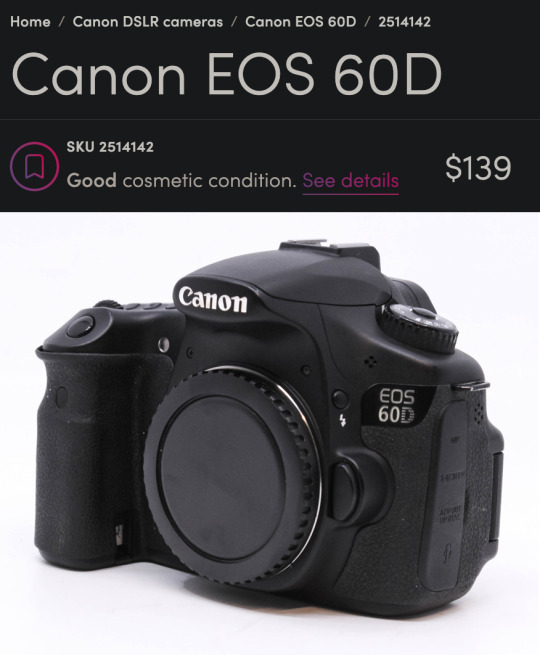
That was my first camera and I took some very nice photos with it. Only 18 megapixels but it has a very convenient flippy screen which was really helpful for a disabled photographer trying to get low angles.
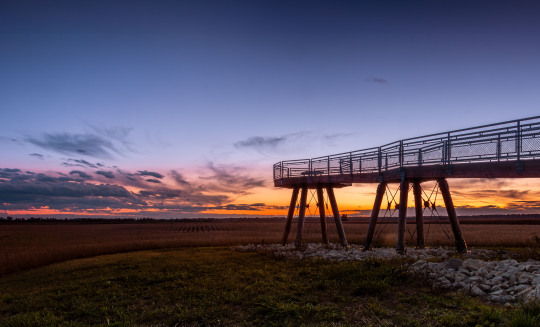
This was in 2014 and I didn't know what I was doing but that is a pretty stellar-looking sunset for a (now) $140 camera.
Nikon APS-C
And the Nikon D3400 would be a great option as well at around $184.
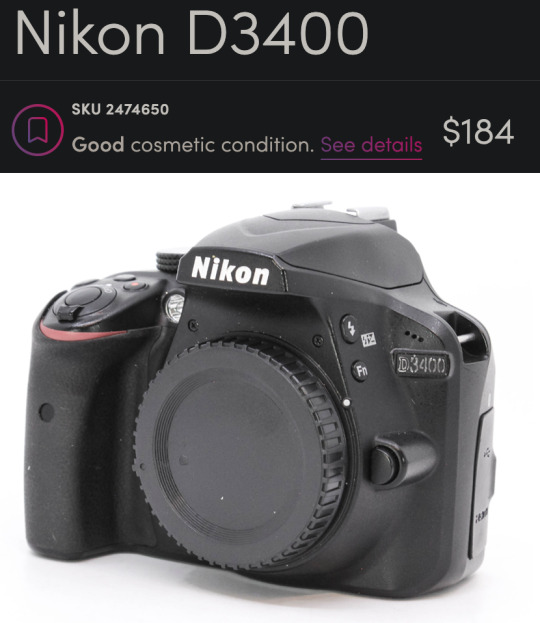
You get some extra megapixels (24) and it is a bit newer than the Canon. I get the sense that used Nikon DSLRs give you more value for your money right now but I don't have a large enough sample size to confirm that.
Full Frame DSLR Lenses
Froggie Note: I am recommending full frame lenses even if you choose an APS-C DSLR body so you have an upgrade path. But also very few purpose-built APS-C lenses had superior glass. Just remember, crop sensor APS-C cameras add ~1.5x to your focal length. So a 16-35mm will have the equivalent field of view of a 24-50mm lens. Still quite acceptable for landscapes, but you may benefit from doing panoramas more often. And if you upgrade to full frame down the road, you'll already have the ideal lens.
Canon DSLR Lenses
If you get the 6D or another Canon you could pair it with the beloved-by-landscapists Canon 16-35mm f/4L.
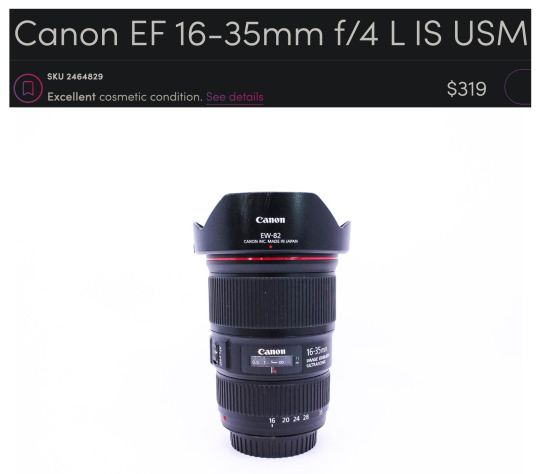
Honestly, it is blowing my mind you can get that combo for under $600. Me from 12 years ago is super jealous right now.
If you are worried you might need something to work in lower light and still want a zoom, the f/2.8L starts at around $434.
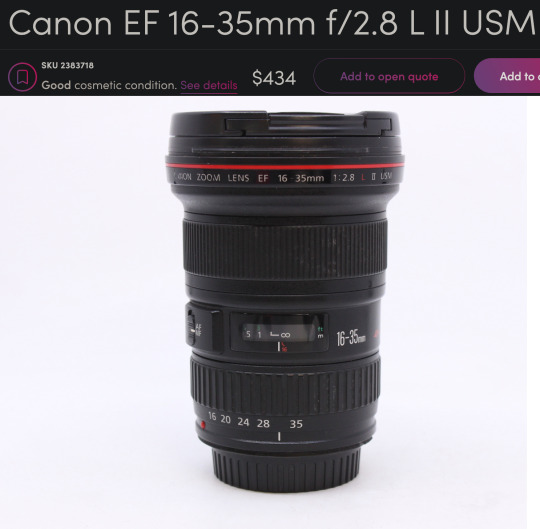
This might be the most famous landscape lens of all time. Kinda boggles the mind how many gorgeous vistas this thing has captured the light of.
If you can live without the zoom, you could get a much sharper prime lens that can also be used in even lower light. A used Sigma 24mm f/1.4 Art lens is $439 would be a fantastic option.
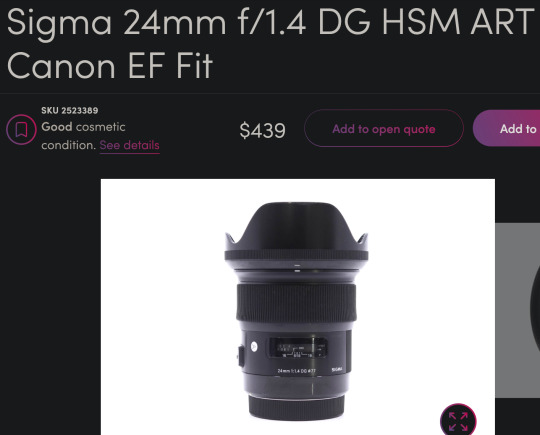
24mm is still a very good focal length for landscapes and the sharpness of this lens lends well to panoramic stitches. Seriously, these art lens are so freaking sharp. Although 35mm is typically preferred for most street photography, I think this would do great for that purpose as well. It couldn't do close up portraits, but 3/4 and full body portraits would look great. I also love this focal length for doggos. It enlarges their heads a bit which enhances adorable-ness.
Though I probably wouldn't recommend the 24mm on APS-C for landscapes as it would put you near a 40mm full frame equivalent field of view.
Nikon DSLR Lenses
And on the Nikon side of things you could get the Nikkor 16-35mm f/4 for $399.
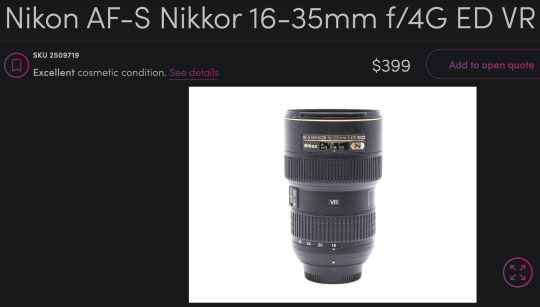
This is a great lens too. Very comparable to the Canon L glass. And paired with that D800 you would have a better shooting experience than with the 6D if it fits within your budget.
It's a little harder to find, but you can also get that same Sigma 24mm f/1.4 Art lens for Nikon at around $528 used on Amazon and in the $400 range on KEH and MPB when it is available.
The older and softer Nikkor 28mm f/1.8 is a little more affordable and easier to find.
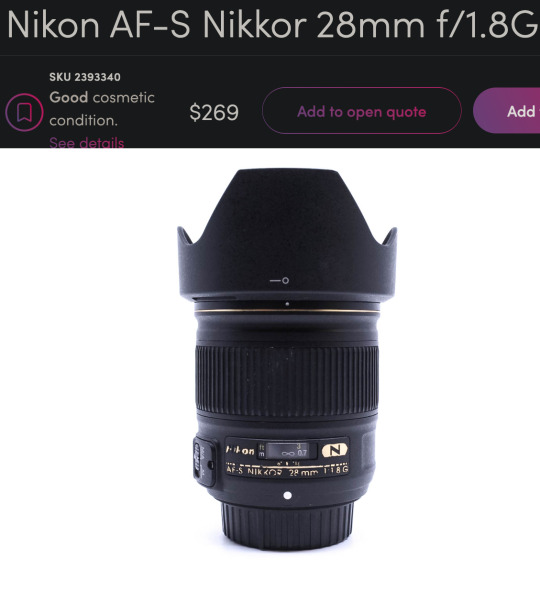
What if you are not a dentist but are willing to save up for something a little nicer?
Enter the world of...
Mirrorless Camera Systems
Sony currently has my favorite ecosystem of mirrorless cameras and lenses and they are consistently ahead of the other brands as far as technology and features. In fact, many other manufacturers use Sony sensors. They literally supply their competition with their own tech. They are also pretty good about updating firmware—even with older models. So I feel like Sony has a lot of future-proofing advantages over other brands. Sony has a great selection of 3rd party lenses like Sigma, Tamron, Viltrox, Laowa, Samyang, etc. These lenses often have nearly the same optical quality as Sony's G Master lenses at a fraction of the price.
Full Frame Mirrorless
Currently, I think the best value full frame mirrorless camera for landscapes would be the Sony a7R III.
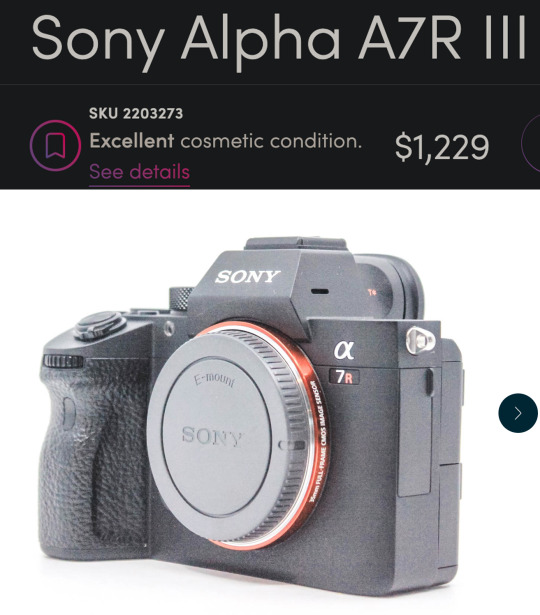
This is very nearly a top-of-the-line landscape camera for a little over $1200.
That might sound like a lot, but I want to be clear...
This isn't just decent. This isn't "good enough." This is a spectacular professional grade full frame camera.
10 years ago you could spend $6500 for a *worse* camera. 5 years ago you could spend $3000 for a *worse* camera.
It can do every genre of photography except for maybe fast paced sports/action. It has an amazing 42 megapixels—which are not necessary but they do make editing and printing a lot less of a headache. The file sizes can get a little big, but storage is a lot cheaper than it used to be.
Oh, and it can be used for professional quality 4K video work too.
The a7R III comes with all of the modern bells and whistles including in-body stabilization (IBIS) so you can handhold at very slow shutter speeds. It has one of the best autofocus systems—complete with eye tracking. But not just human eyes! Dog eyes. Cat eyes. Bird eyes. If it has an eye, the Sony can probably lock focus on it. And it has an admirable 10 fps burst shooting mode.
APS-C Mirrorless
If you want to enter the Sony ecosystem but can't afford full frame quite yet, you could do the a6400 for about $600.
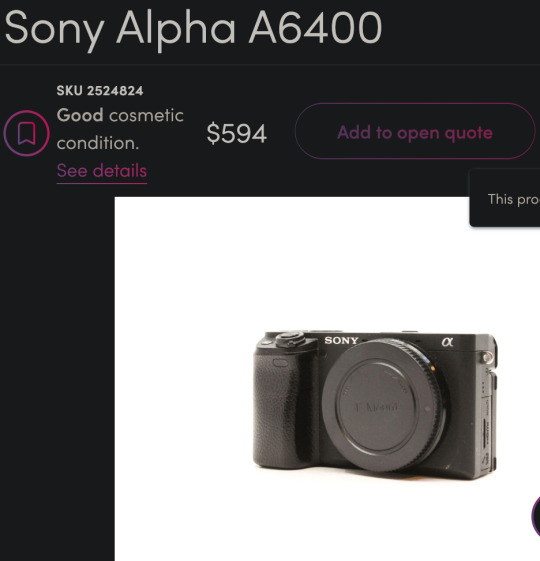
You still get the eye-tracking and the in-body stabilization, but you will lose some image quality at higher ISOs due to the smaller sensor size. However, you can get the same full frame E-mount lenses for it and upgrade to a bigger sensor later on and not have to buy new lenses.
Mirrorless Landscape Lenses
I think a good value landscape lens would be the very impressive Tamron 20-40mm f/2.8.
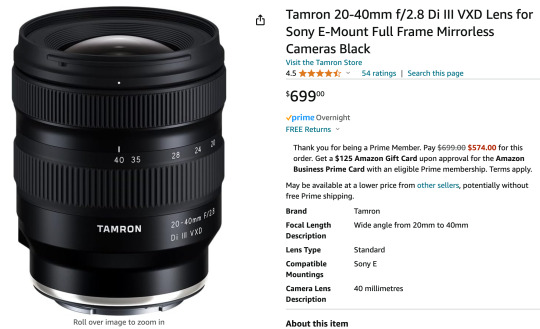
This is a newer lens so there aren't many deals on used options yet. But this is still a great price for the quality and versatility you get. You will never regret spending a little more on glass.
The 20mm range can fit an entire cityscape in the frame without needing to do a panorama. But if you zoom to 40mm and mount the camera vertically, you could stitch together several photos to get well over the 100 megapixel range.
Also, the 40mm focal range is long enough to do street photography and even head & shoulder portraits. The wide f/2.8 aperture combined with the high-ISO friendly full frame sensor and in-body stabilization means you can shoot in very low light without a tripod. You can also get some great pictures of stars if you travel to someplace with minimal light pollution.
The cheapest landscape zoom lens I could find was the Sony 16-35mm f/4 at $384.
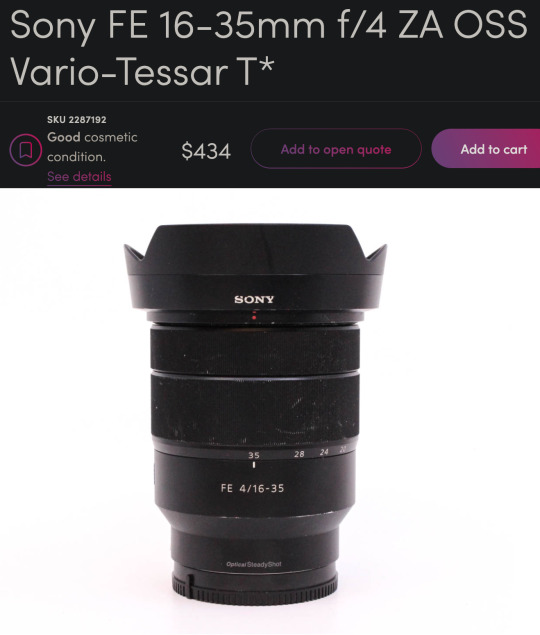
It's one of Sony's older lenses and may not take advantage of all of the a7R III's pixels, but it would be a good option to get you started in this system and upgrade the lens later on.
Mirrorless Prime Lenses
Zoom lenses are great but you have to spend more to get tolerable quality. Kit zooms can be softer than even the tiny plastic lenses on your phone. So a great way to stretch your budget is to get multiple fixed focal length "prime" lenses. Primes can be built inexpensively while still having good low light performance and decent sharpness.
For instance, you could start with something like the Tamron 20mm f/2.8 for $175. And if you want to do more than landscapes you could add the Sony 50mm f/1.8 for $170 later on. Cheap primes will outperform any of those mediocre kit zoom lenses in that same price range. You lose some versatility and have to deal with the pain of changing lenses or zooming with your feet, but sometimes a tight budget demands a little pain.
There is also a higher quality 3rd party wide angle prime lens that is very popular right now. The Viltrox 16mm f/1.8 is only $549 and the reviews say it has similar quality to lenses 3 times its price.
If you have to choose between a better camera body or a better lens, a good lens will help your photos more than a fancy camera body.
Froggie Note: These are examples. You should always do your own research before making a major technological purchase. This post could be a year old by the time you see it and there could be new stuff that is better. But all of the principles I tried to convey should hopefully guide you to a good decision. Also, feel free to message me if you want to ask about specific gear you are considering purchasing.
More Resources
This is my Encyclopedia of Lens Terms which is a helpful primer in understanding all of the wonderful and different lens options available on ILCs.
This is my buying guide for low budget used DSLRs. Similar to this post but less geared toward landscapes.
And this guide for getting decent landscape photos with any camera.
This is a free tutorial that teaches you everything you need to get started with an ILC system.
youtube
And this free tutorial by Karl Taylor is quite good as well.
70 notes
·
View notes
Video
000052490022 by sadjeans
#leica cl#7artisans 35mm f/2#that one photo lab#kodak pro image 100#rangefinder#35mm#film#desert hot springs#el morocco inn and spa#flickr
0 notes
